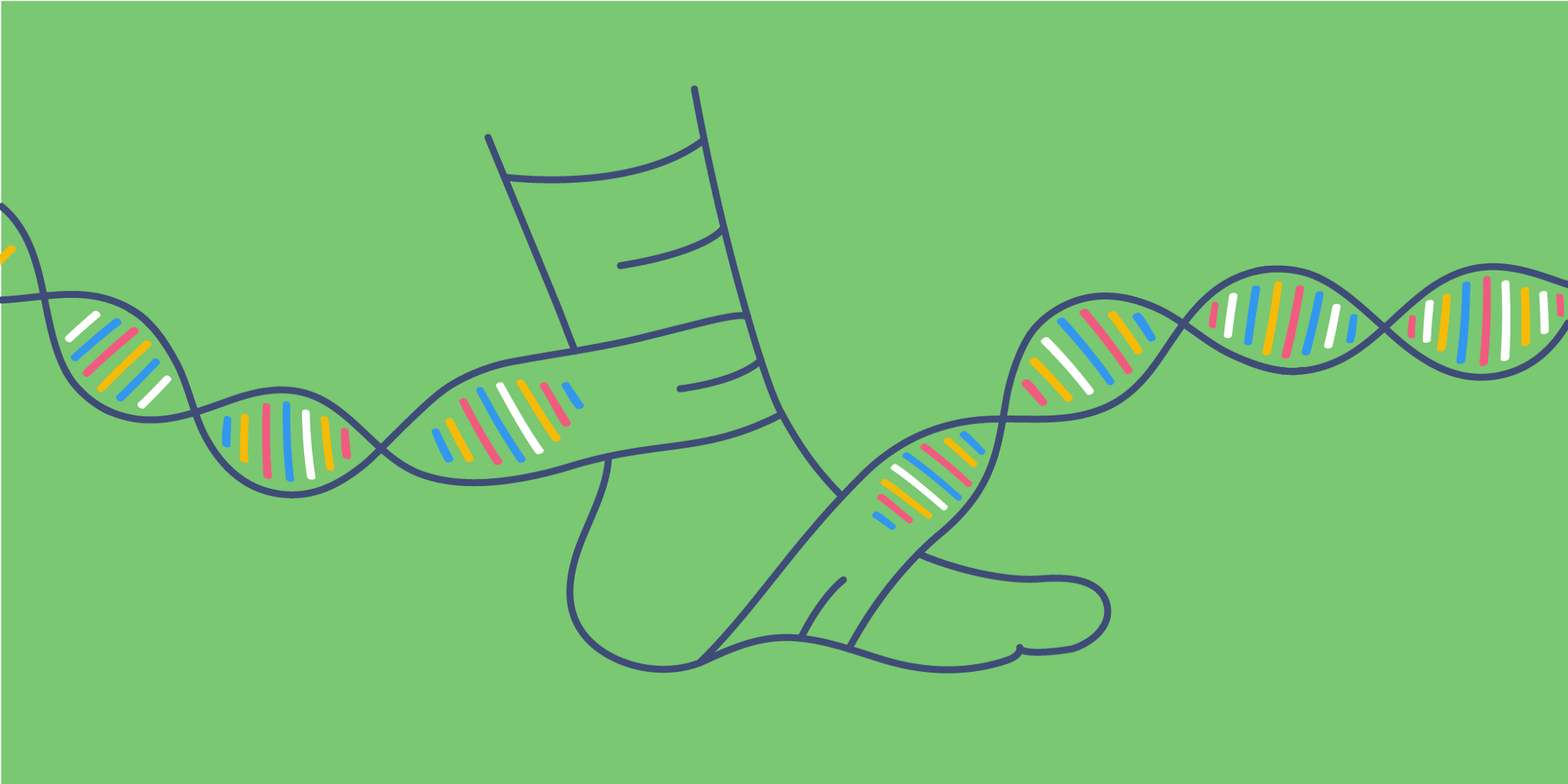ACL Tears & Stress Fractures: Can DNA Make a Difference?

Sports excite, inspire, and move us in unique ways. We love to follow our favorite athletes as they play through a season. We pay thousands of dollars each year to sweat with dozens of other people in ever-hipper boot camp classes. We can buy the perfect shoe designed for exactly the right kind of impact and movement. Technology helps everyone from athletes to enthusiasts to beginners perform at the top of their game, but there is a downside to all of this activity: the potential for athletic injuries.
An emerging approach to helping athletes avoid these types of injuries involves our DNA. New research is beginning to show that there are possible links between certain genetic traits and the likelihood of getting hurt. This field of research has significant potential to help everyone—from occasional exercisers to elite athletes—better understand how to keep their bodies healthy along the way.
With advances in science and technology, it’s easier than ever to unlock that potential. Products in the Helix marketplace like DNAFit’s Fitness Diet Pro feature exercise and nutrition recommendations customized to your genetic profile, helping you lead a healthy lifestyle while reducing risks and improving your results.
Tears in the ligaments and tendons (ACL tears, for instance) are common injuries, with a particularly high rate among football and soccer players1. In an effort to predict who may be more susceptible, geneticists are exploring potential links between ligament tears and a variation in the gene coding for a specific protein known as COL1A1. This protein helps build the collagen component in ligaments — a component which can account for as much as 80% of the ligament’s total weight. Different types of collagen, built from a family of similar proteins, can have different physical properties. To balance flexibility with strength, specific combinations of these collagen types get incorporated into the ligament.
COL1A1 is known to have variations that can shift this composition. Researchers hypothesize that some variations can affect the overall strength of the ligament, which means that individuals may be less likely to experience a tear depending on their genetics. This is currently a topic of intense research, and recent papers indicate that there may be an association between this gene variant and specific demographic populations. Further research in the field could one day help athletes stay safer and healthier.
Genetics also plays a role in repetitive stress injuries like stress fractures. LRP5, a gene that regulates bone mineral density, has been identified to play a role in stress fracture risk; a variation in LRP5 can lead to lower bone density, which can lead to more fractures. Individuals with this variant shouldn’t be discouraged, though, because evidence indicates that mixing up exercise routines can help to reduce chronic stress and reduce injury.
But no matter your preferred routine, learning more about your body can put you on the path to a safer and more effective workout—and exploring the fitness products in our marketplace can be a great place to start.

1Agel J. Rockwood T. Klossner D. Collegiate ACL Injury Rates Across 15 Sports: National Collegiate Athletic Association Injury Surveillance System Data Update (2004–2005 Through 2012–2013). Clinical Journal of Sports Medicine 2016.
Categories